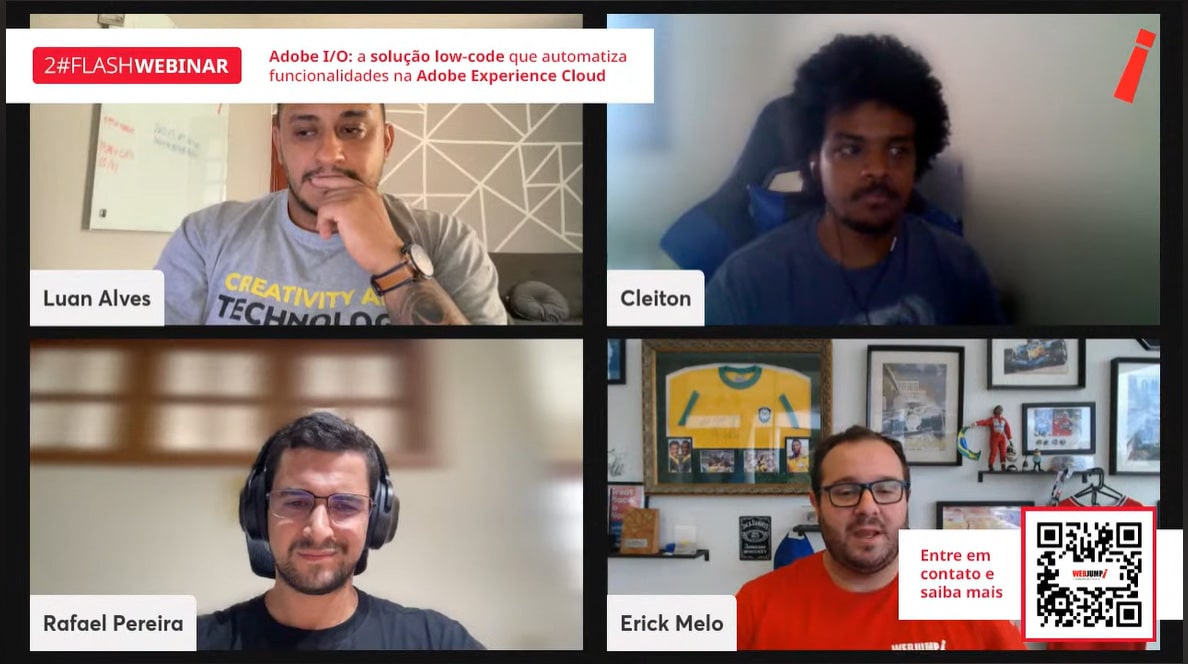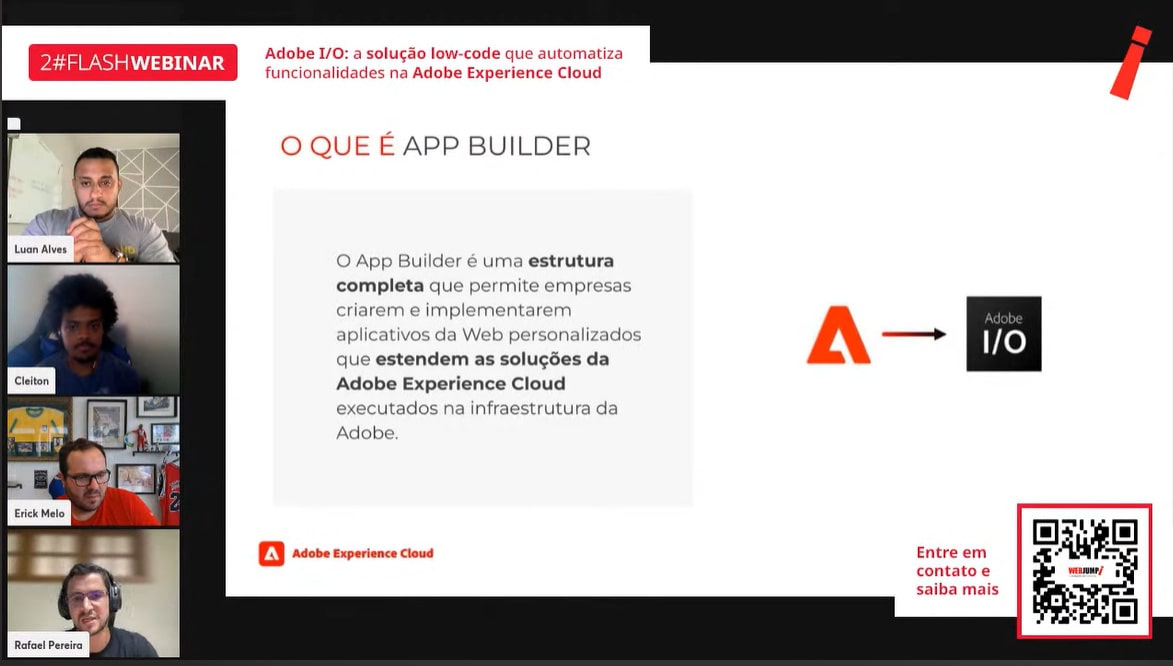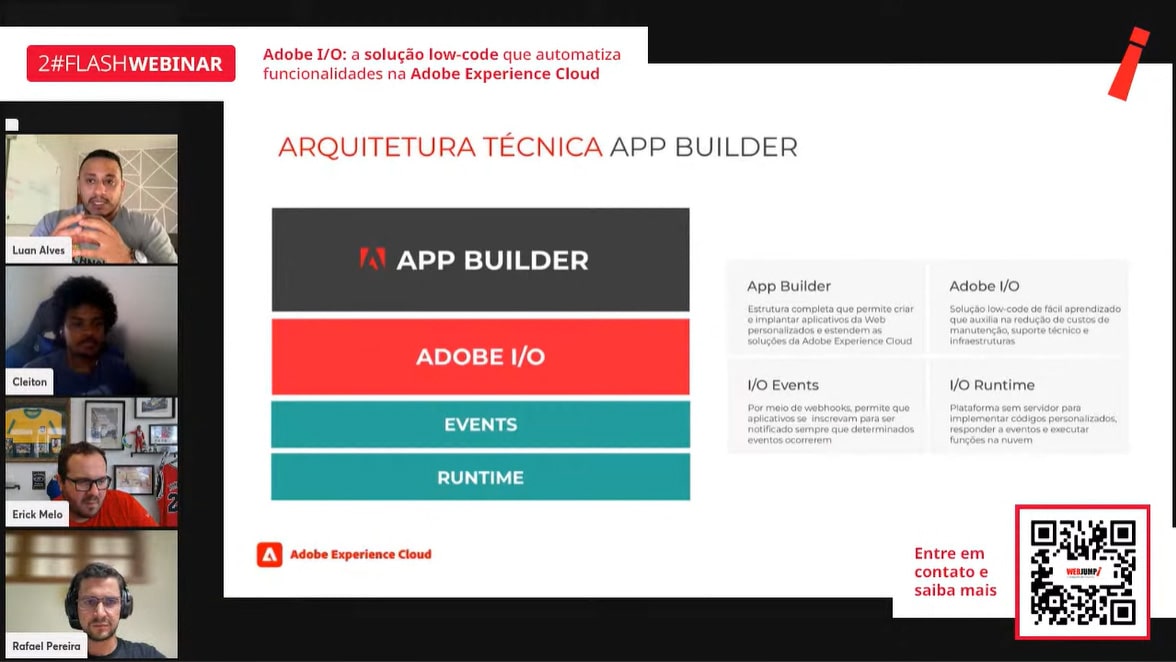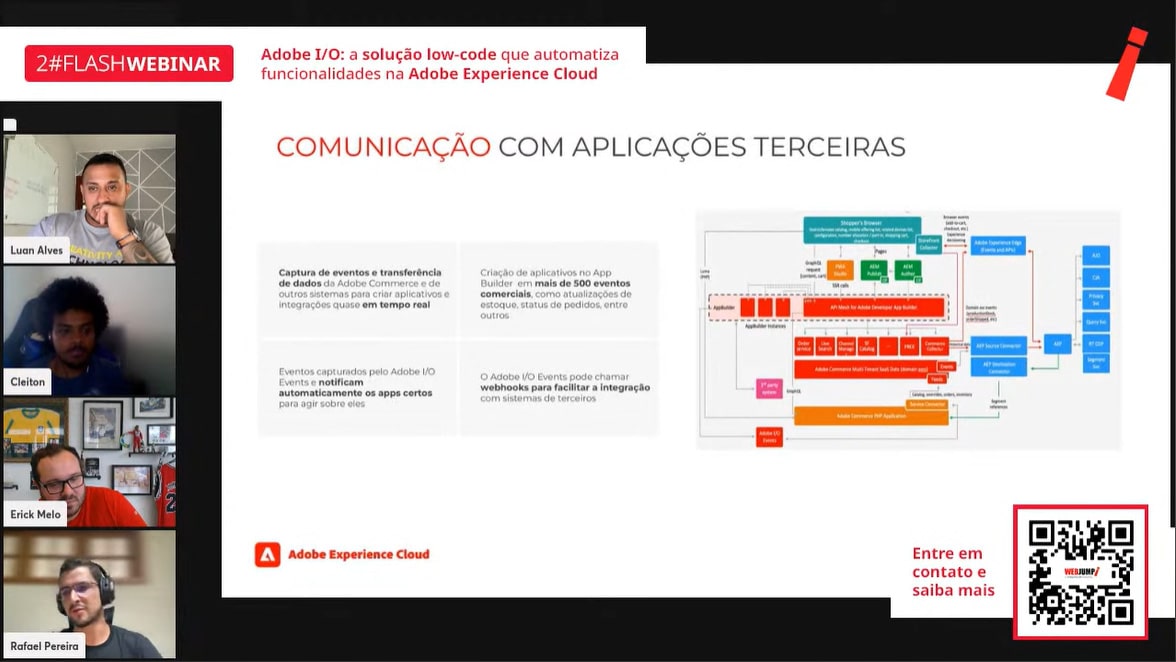Continuing the series of webinars that are happening in 2023, on February 14 WEBJUMP presented the 2nd flash webinar, on Adobe I/O.
We counted with experts on the subject as speakers, being them: Erick Melo, CCO and Cofounder of WEBJUMP, Luan Alves, Head Software Engineer at WEBJUMP, Cleiton Willians, Back-end Developer at WEBJUMP and Rafael Pereira, Solutions Consultant at Adobe.
The event approached relevant themes about the solution, such as:
- What is Adobe I/O;
- Benefits for your business;
- Exclusive demonstration of the solution;
- And more!
Check out:
Meet Adobe IO
The presentation started with an explanation about what Adobe I/O is, its main tools, and the benefits that this platform makes available.
Among its many advantages, the platform stands out:
- Absolute focus on developer productivity: create a new app from scratch and deploy it to Experience Cloud in 15 minutes;
- Everything you need is in the box: CI/CD, tests, developer sandboxes;
- No server and scaled to zero;
- It all starts on the command line and in the APIs. And it is all open source;
- Use it immediately with Adobe Experience Manager;
- It also includes SDKs and quick start templates for Analytics, Target, Experience Manager, Experience Platform, Commerce, and more.
APP Builder
Luan Alves, introduced us to some technical points, explaining briefly about App Builder.
Within App Builder, we have Adobe I/O, an easy-to-learn low-code solution that helps reduce maintenance, technical support, and infrastructure costs.
Adobe I/O includes Events and Runtime. With Adobe I/O Events, you can subscribe your application to be notified whenever certain events occur, via webhooks. For example, when a user loads an asset, this action generates an event. With the right webhook, your application is instantly notified that this event has occurred.
Platform Demo
Cleiton introduced us individually to each of the App Builder components and then we had an exclusive demonstration of the platform.
Adobe IO in practice
To better understand how the solution works, Luan highlighted some important points about how the industry can benefit from Adobe I/O.
Application Integration
- Example: Order integration with ERP;
- Example 2: In the CMS scenario query Commerce data.
Consuming External Environment Data
- Example: Query for freight in the Commerce environment;
- Example 2: Adobe Commerce users may consider API Mesh as a way to integrate other APIs into the Storefront and Storefront Management APIs. It also provides a way for the Storefront API and the Storefront Management APIs to communicate with each other.
Greater power of horizontal scalability, reducing cost
- The architecture model allows you to split the services without having to increase the machines, causing the cost to increase.
Greater organizational power of teams
- Since the architecture is divided, then managing the teams is simpler.
Communication with third-party applications
And to finish, Rafael explained in detail how communication with third-party applications works.
Access our content and watch the event in its entirety through our Youtube channel.
Do you want to perform a digital transformation of your company?
Talk to an Innovation Consultant and learn more!













